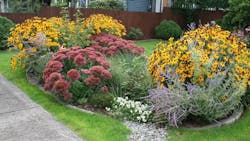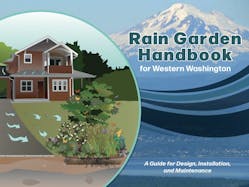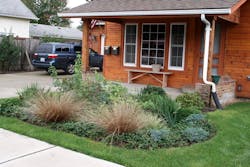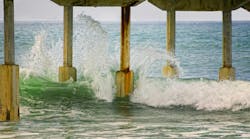The newly released 2023 “Rain Garden Handbook for Western Washington” is a guide to installing and maintaining a rain garden in Western Washington. Funded by the U.S. Environmental Protection Agency (EPA) and edited by a specialized advisory committee, the handbook is a definitive resource for those seeking to utilize rain gardens in stormwater management.
Curtis Hinman, stormwater infrastructure specialist at Curtis Hinman and Associates and principal author of the handbook, said that much has been learned in stormwater management since the 2013 edition of the handbook. Lessons on the effective application of rain gardens, including new knowledge on plants and soil, have been incorporated into the 2024 edition.
“Western Washington has pretty interesting rainfall patterns, and we have a sophisticated approach to designing stormwater facilities. The modeling process is more in-depth than in most places in the country,” Hinman said. “We tried to take that knowledge and boil it down into something really simple for the rain garden handbook.”
What is in the updated handbook?
The 2024 rain garden handbook includes new, illustrative photos and updated rain garden sizing criteria. Hinman said that this new edition has a focus on readability, providing an intuitive guide to readers regardless of their experience in rain garden construction.
“We’ve made it much simpler for a homeowner to go ‘Okay, I’ve got a roof this large and a driveway this large, and this is the recommended size for a rain garden,’’” Hinman said.
The handbook also includes reorganized and improved graphics, new rain garden planting plans, and a completely updated plant table providing accessible knowledge on how to make a rain garden effective and attractive. This new edition guides the user in long-term maintenance of rain gardens.
Marilyn Jacobs, co-owner of the sustainable landscaping and stormwater management firm Rain Dog Designs, contributed to the detailed plant listing in the handbook. She said that the handbook is a resource for stormwater management as well as Western Washington’s gardening enthusiasts.
“We live in a very verdant state, and we like to garden. I think the handbook will be helpful for not only rain gardens but all sustainable landscaping,” Jacobs said.
Effectiveness of rain garden maintenance
Erica Guttman, a senior extension coordinator and educator at Washington State University, contributed foundational knowledge to the previous 2007 and 2013 editions of the handbook. She said much has been learned about effective rain garden plant maintenance since the last edition of the handbook.
“People should plan for maintenance of the plants they’re planning to have. You shouldn’t put a lot of complicated plants on a site that’s not going to receive consistent maintenance,” Guttman said. “With this edition, I think our plant team’s focus was on plants that stay a little tidier and removing from the list some bigger or more wild native plants. Now we’re relying more on cultivars that are little more dwarf in size – shorter plants that stay in balance with the size of the rain garden.”
Guttman said rain gardens are one of the easiest stormwater treatment strategies within the low-impact development suite of options. She said that, compared to other options, they are relatively inexpensive and easy to install, and they should be more widely used as part of decentralizing stormwater management, managing stormwater on-site, and recharging local groundwater.
“Rain gardens are one of the many things people can do and I think they can empower people and help them realize they can be a part of the solution,” Guttman said. “At the individual scale, we’re keeping water out of the system and reducing the stormwater flowing across roadways – essentially, picking up all that toxic soup. If I manage the stormwater on my property, the amount of stormwater in front of my house will be dramatically reduced. If we all don’t have this rainwater in the street, that’s a significant reduction in stormwater.”
Rain garden installations have grown exponentially as a best practice in low impact stormwater management since the previous edition of the handbook. The 2024 edition explains how rain gardens can be used to meet the stormwater management requirements of new development posed by the Washington State Department of Ecology and provides an appendix directing homeowners and developers to more information.
Hinman said that as Puget Sound’s population increases, and as new ground is disturbed in development, effective stormwater management will become more significant. He said that responsible stormwater management, and the preservation of Western Washington’s ecosystems, could begin with the individual homeowner.
“Land disturbance and stormwater here in Washington, as well as in other parts of the country, is one of the primary ways we're degrading freshwater streams and wetlands, and estuaries. In our region, it is the leading cause,” Hinman said. “Putting a rain garden on your property is completely attainable, and actually makes a difference.”








